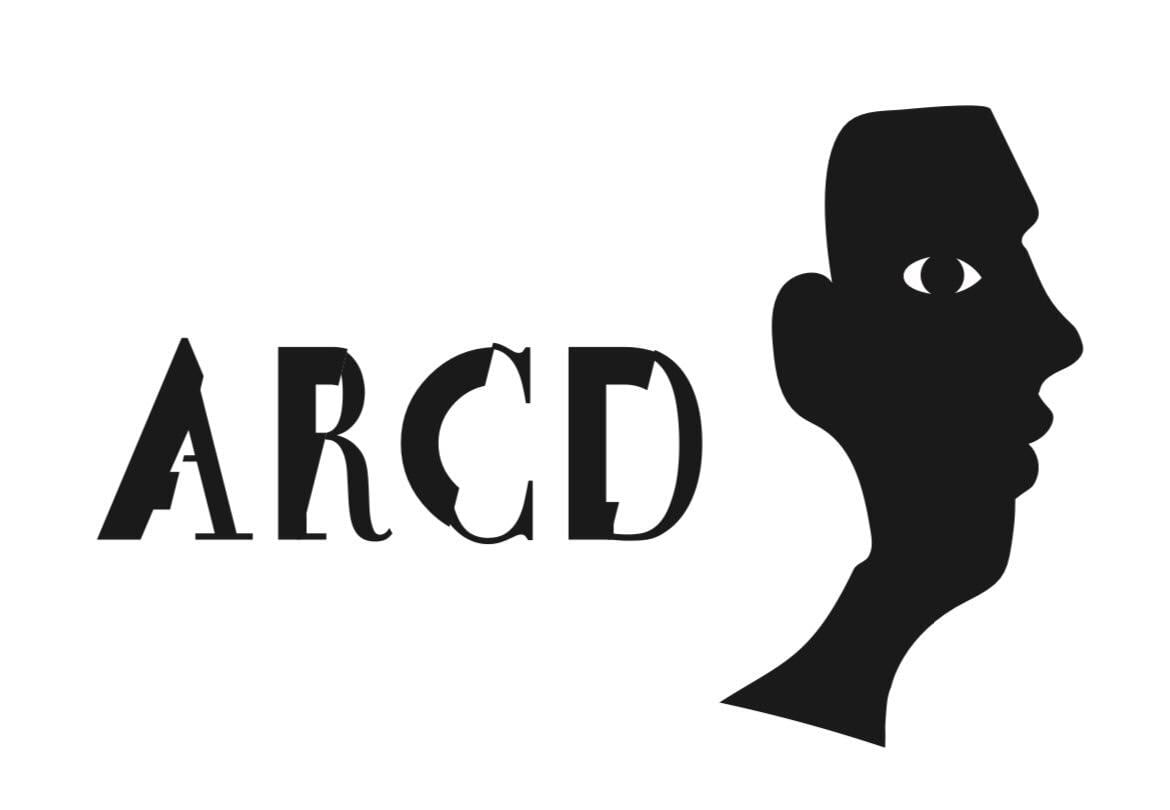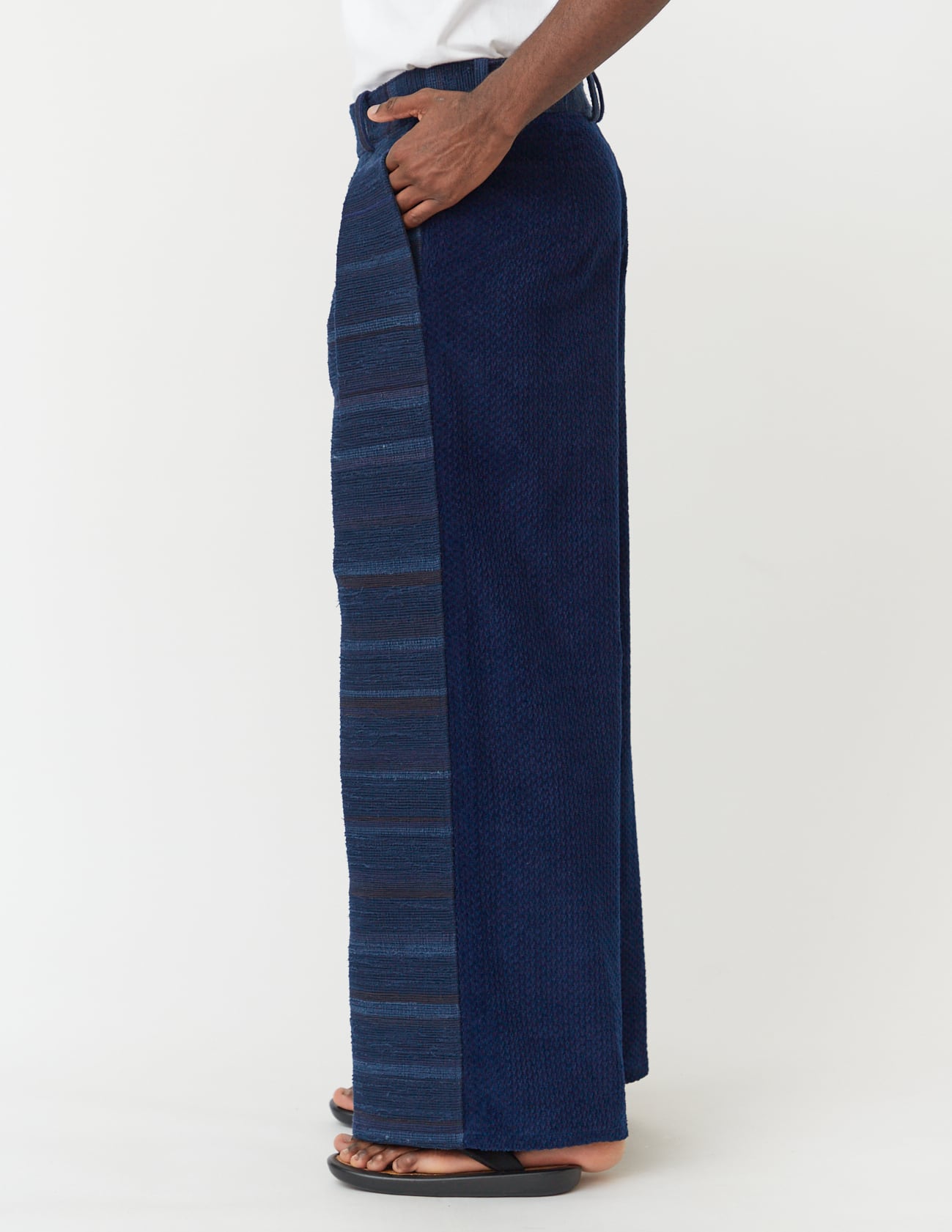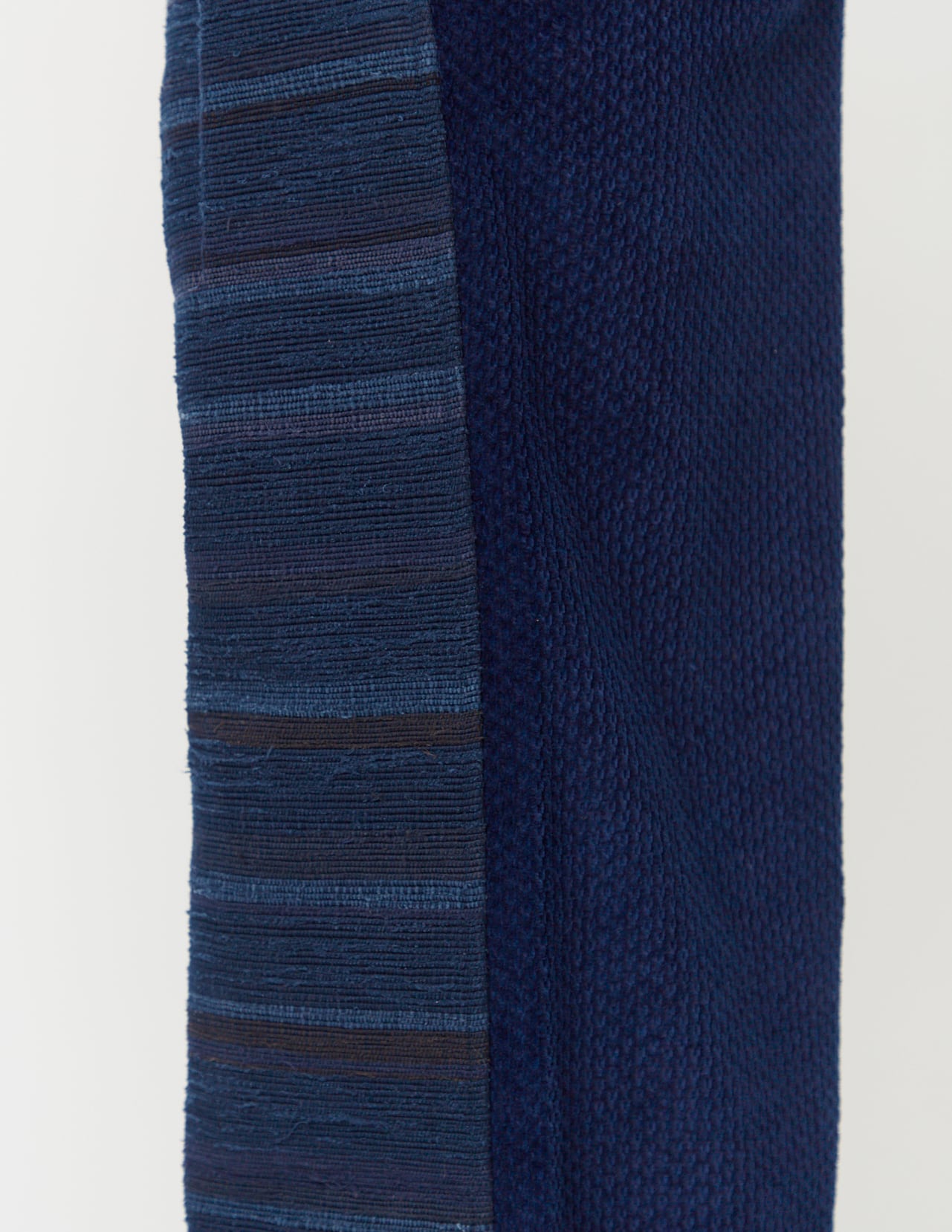NOBNAGA Paris / JAPAN ''Sakiori'' GURUKHA BAGGY PANTS (221075)
¥192,500
なら 手数料無料で 月々¥64,160から
【Description】
NOBNAGA parisのバギーパンツ。深いインサイドタックを入れたゆとりのあるバギーパンツは裾にいくにつれ極端な広がり持たせているのが特徴。1920年代のオックスフォードバグズを思わせる裾の広がり。そして、どことなく文化的背景とは他所に、フランスのエスプリが効いたエレガントな雰囲気を感じます。今コレクションは、西洋の鎧や日本の軍服を着想源にしながら、【対比】をテーマにしています。鎧の、一切の際が無いように体に沿わせた構築的なデザインを再現するために前身頃・前袖には厚手の生地を使用しながら、後身頃・後袖には服としての機能性を持たせるための対照的な薄手の生地を使用。ネイビーとカーキをコレクションの基調色としながらも、前後のパーツは配色にせず同系色で統一することにより、他の対比は微細なものに抑えながら、素材感における対比を強調させるようにしています。また対比は素材だけではなくシルエットとデザインの上でも行われ、正面からと背面からではその姿は一変、すれ違い様に雰囲気・表情の相違が明らかになる世界観のコレクションとなっています。
ー南部裂織ー
前身頃の、鎧のような構築感とシルエットを支えるための厚手の生地としてコレクションを象徴するのは、青森県の南部地方で江戸時代から伝わる伝統工芸品の【南部裂織】。当時の北国では寒さのために貴重だった木綿は、使い古された後には裂いて糸を経糸にして織り込まれ、夜着やこたつ掛けとして再利用されていました。江戸時代に青森に運ばれるようになった木綿の多くは藍染めの古手木綿だったこと、また使い古した生地は合いが多様であったことにより、自然な他のグラデーションを持たせることに繋がりました。裂識は、生地を裂きなから織るか生地を予め裂いておいて織るかの違いで織りあげるのに多少の時間は生じても、一日で1m織るのが限界という非常に時間と手間のかかる工法です。織物の設計から完成までは、10もの工程を経る必要があります。また南部裂織の特徴である藍染の古布は今日では大変貴重な上、生地をまず解き、値落ちを防ぐために何度も洗い、干してアイロンをかけてから初めて裂くことができるため、織り始めるまでにも多くの手間と時間が必要になります。古布による柔らな手触り、自然な色のさめ方のグラデーション、裂いた布による幅と素材の差異が機械で織ったもののようには均一にはならいために人の気持ちを和らけるという「ゆらぎ」が生まれる、という特徴を持った生地が南部裂織です。
These baggy pants from NOBNAGA Paris feature deep inside tucks for a relaxed fit, flaring dramatically at the hem. The front is made of sakiori fabric, a traditional Japanese craft, while the back features Japanese indigo corduroy. This collection, inspired by Western armor and Japanese military uniforms, is based on the theme of "contrast." To recreate the seamless, structured design of armor, which conforms to the body, thick fabric is used for the front and front sleeves, while a contrasting, thinner fabric is used for the back and back sleeves to maintain functionality. While navy and khaki are the collection's primary colors, the front and back are unified in similar tones, rather than a color scheme. This emphasises the contrast in texture while keeping other contrasts subtle.
Contrast is not limited to the materials, but also extends to the silhouette and design. The garments appear completely different from the front and back, revealing distinct atmospheres and expressions as they pass each other. This collection explores a unique worldview.
Nanbu Sakiori (Nambu Sakiori)
The thick fabric that supports the silhouette and creates the armor-like structure of the front of the garment symbolizes the collection. Nanbu Sakiori, a traditional craft handed down in the Nanbu region of Aomori Prefecture since the Edo period, is a craft that dates back to the Edo period. Cotton, once a valuable commodity in the northern regions due to the cold, was torn after wear and used, and the threads were woven into warp threads for reuse in nightwear and kotatsu covers. Much of the cotton brought to Aomori during the Edo period was secondhand indigo-dyed cotton, and the diverse textures of used fabric led to the creation of natural gradations. Sakiori is an extremely time-consuming and labor-intensive method, with a maximum weaving speed of one meter per day, although the weaving time varies depending on whether the fabric is torn or pre-ripped. From design to completion, a textile requires 10 steps. Furthermore, the indigo-dyed vintage cloth that characterizes Nanbu Sakiori is extremely valuable today, and it takes a lot of time and effort before weaving can begin, as the fabric must first be unraveled, washed many times to prevent its value from decreasing, then dried and ironed before it can be torn.Nanbu Sakiori fabric is characterized by its soft texture due to the vintage cloth, the natural gradation of the faded color, and the fact that the differences in width and material due to the torn cloth are not uniform like machine-woven fabrics, creating a soothing "fluctuation."
Made in Japan
【Fabrics】
(Front/Back) Cotton 100%
(Pocket Bag / Inside Parts) Ramie 48%/ Linen 42%/ Wool 10%
【Color】
INDIGO
【Size】
Size ML
ウエスト/Waist/82cm
ヒップ/Hip/56cm
股上/Rise/37cm
股下/InSeamLength/73cm
ワタリ/Wading/33cm
裾幅/Hem width/30cm

























